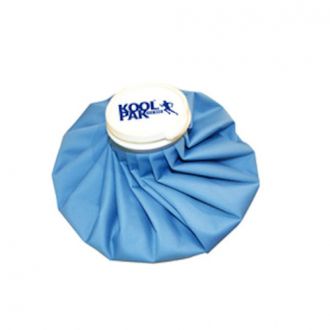5 Common Football Injuries and How to Avoid Them
Picking up injuries is one of the inescapable drawbacks of playing football at a competitive level. In the vast majority of cases, an injury is little more than a niggle that rights itself with rest. However, there are some footballing injuries that require an extended period out of the game, physiotherapy or surgery. You may be able to reduce your chances of succumbing to a serious injury by knowing what the most common types are - and how to avoid them.
1. Ankle sprains
The ankles of a footballer are subjected to tremendous strain throughout a match. The tight turns, ball manipulation and sprinting that are part and parcel of the game can put pressure on the bones, muscles and tendons - leaving ankles particularly susceptible to injury.
It is believed that around a third of all footballing injuries involve a sprained ankle, yet there is little that can be done to prevent them from happening. A lateral sprain is the most common type of ankle injury, and it happens when the ankle buckles outwards under the weight of a player. A far less common type of injury is the medial sprain, which involves the ankle buckling inwards.
The best way to prevent serious sprains is to listen to your body. As soon as you feel pain or discomfort in that area, you should stop playing, inform your coach and take your weight off your ankle immediately. Players who are particularly prone to ankle sprains will often wear preventative strapping, and they might perform specific resistance training exercises in order to build strength in both ankles.
2. Tear of the anterior cruciate ligament
The anterior cruciate ligament (ACL) is located deep within the knee joint. Its function is to maintain the position of the tibia. Unfortunately, a seemingly innocuous incident can lead to the tearing or rupturing of this tendon, which can be hugely painful when it happens. An awkward foot position or a sliding tackle from the slide are common causes of a torn ACL, so other than building knee strength through regular resistant training, there is little that can be done to prevent this relatively rare injury.
3. Hamstring strains and tears
Hamstrings are tendons at the back of the thigh, and they can be strained during sudden bursts of speed, and when over-stretching for balls. In many cases, a player will get a warning that something is wrong with one of their hamstrings - which might involve a little tightness and discomfort. However, a serious strain or tear can be excruciating when it happens, and leave a player facing up to three months on the sidelines.
The best way to avoid hamstring strains and tears is to stretch and warm up thoroughly before matches - and during half-time if necessary. Unfortunately, it seems that some footballers are more prone to this injury than others.
4. Meniscus injuries
The Meniscus is a collection of cartilage that sits above the shin bone - providing a cushioning effect from the weight and friction of the femur. The meniscus can tear if a player moves awkwardly. For instance, playing on a particularly boggy pitch can mean a foot is left in the ground while the knee turns to move in a different direction. Many players also suffer from a degeneration of the meniscus that occurs over the course of several years. Again, strength, fitness and conditioning training will reduce the risk of meniscus injuries.
5. Groin strains
It is thought that around 15 percent of all football injuries are related to the groin. Groin injuries involve the stretch, tear or rupture of the muscle that joins the inside of the thigh to the pelvis. The severity of groin injuries can be deceiving, which is why so many players choose to play on with them.
A groin strain happens when the muscle is subjected to overuse, a sudden contraction or a combination of the two. It is therefore essential that you perform complete warm-up routines, which should involve specific groin stretches. Mild groin injuries will keep a player out for a week or so. However, more serious issues can only be permanently addressed with complete rest for several weeks. In a few, rare cases, surgery is required.
It is virtually impossible to play football competitively over a number of years without picking up an injury of some kind. However, by working on technique, warming up before matches, regular resistance training and listening to your body, you should be able to keep your injuries to a minimum.




